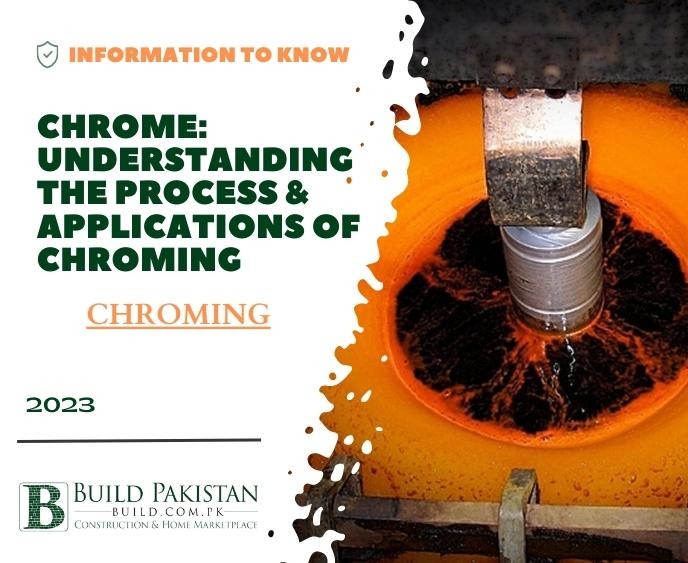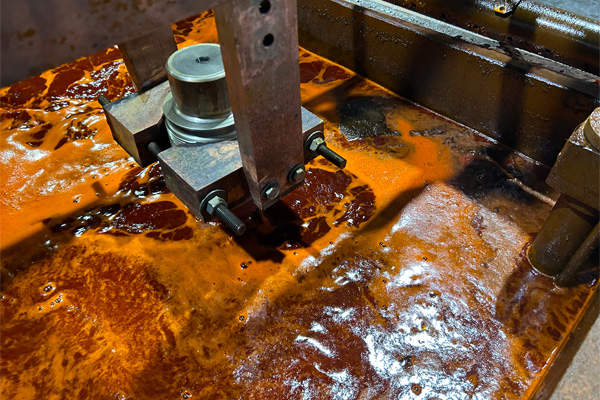Chrome: Understanding the Process & Applications of Chroming

Introduction:
Chroming, also known as chrome plating or chromium plating, is
a surfacefinishing process that involves applying a thin layer of chromium
onto a metal or plastic surface. This electroplating technique enhances the
appearance, durability, and corrosion resistance of the underlying material.
Chrome plating has a wide range of applications across various industries, from
automotive parts and household fixtures to industrial machinery and decorative
items. In this blog, we will delve into the chroming process, its benefits,
popular applications, and its impact on various industries.
The Chroming Process
Chroming is achieved through an electroplating process, which
involves the deposition of a thin layer of chromium onto the surface of a
substrate. The steps involved in the chroming process are as follows:
Surface Preparation:
The surface of the substrate is
thoroughly cleaned and prepped to remove any dirt grease, or impurities. This
step is crucial for ensuring proper adhesion of the chrome layer.
Electroplating Bath:
The substrate is immersed in an
electroplating bath containing a solution of chromium salts. The substrate
serves as the cathode, and a separate anode made of chromium is placed in the
bath.
Electric Current:
An electric current is applied to the
electroplating bath, causing the chromium ions to be attracted to the
substrate's surface. The chromium ions then undergo a reduction reaction,
forming a thin layer of metallic chromium on the substrate.
Rinsing and Drying:
After the desired thickness of the chrome
layer is achieved, the substrate is rinsed to remove any residual chemicals and
then dried to complete the process.
Benefits of Chroming
Enhanced Aesthetics:
Chrome plating imparts a shiny,
reflective surface to the substrate, enhancing its appearance and giving it a
mirror-like finish.
Corrosion Resistance:
The chromium layer provides excellent
corrosion resistance to the substrate, protecting it from environmental
elements and chemical exposure.
Hardness and Durability:
Chrome plating increases the
substrate's hardness and wear resistance, making it more durable and
long-lasting.
Easy to Clean:
The smooth and non-porous nature of
chrome-plated surfaces makes them easy to clean and maintain
Heat Resistance:
Chrome plating exhibits excellent heat
resistance, making it suitable for high-temperature applications.
Versatility:
Chroming can be applied to a wide range of
materials, including steel, aluminum, copper, brass, and even plastics.
Applications of Chroming
Automotive Industry:
Chrome plating is commonly used in the
automotive industry for various components such as bumpers, grills, wheels, and
trim pieces, enhancing both aesthetics and durability.
Home Decor and Fixtures:
Chromed items like faucets, handles,
light fixtures, and furniture accents add a touch of sophistication and
elegance to home decor.
Industrial Machinery:
In the industrial sector, chroming is
used t improve the performance and longevity of machine parts exposed to harsh
conditions.
Motorcycle Accessories:
Chrome plating is popularly applied
to motorcycle parts, such as exhaust pipes and fenders, for a sleek and
polished appearance
Electronics and Appliances:
Chroming is used in the
production of consumer electronics and household appliances for a sleek and
modern look.
Environmental Considerations
While chrome plating offers numerous benefits, it is
essential to address environmental considerations related to the process. The
traditional process of hexavalent chromium plating involves the use of toxic
chemicals that can be harmful to both human health and the environment. As a
result, there has been a growing focus on adopting more environmentally
friendly alternatives, such as trivalent chromium plating, which produces less
hazardous waste.
Conclusion:
Chroming, or chrome plating, is a surface finishing process
that adds a thin layer of chromium to a substrate, enhancing its appearance,
durability, and corrosion resistance. The process finds extensive applications
in the automotivehome decor, industrial, and electronics industries, among
others. Chrome-plated surfaces exude a sense of elegance and sophistication,
making them a popular choice for various products and components.










